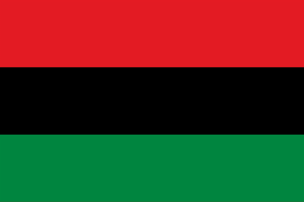SAKAN Partners: AFRICA
This page provides a brief summary of the potential for SAKAN Partnerships in Africa. The desirability of such partnerships may be obvious; however, the discussions below suggest that this vision must remain a work in progress for the foreseeable future. The record of close cooperation and collaboration in Africa remains disappointing. SAKAN will monitor continental progress in the reduction of inequality, poverty and unemployment in the continent, and seize opportunities for collaboration wherever possible.
Please click the "PARTNERS" navigation bar to return to the list of partners, or the "HOME" navigation bar to return to the home page.
African Partners: Discussion
 The vision of an integrated unified African continent has been around ever since the colonial division of the continent during the years 1881 to 1914. In this 21st century, the vision has not abated, however, its achievement remains elusive. The African Union (AU) is the continental body with primary responsibility for continental integration, but within this union are 15 sub-regional unions that overlap greatly and compete within and between each other for dominance and influence. Language differences within the continent are yet another reason for slow progress in integration and mutual cooperation.
The vision of an integrated unified African continent has been around ever since the colonial division of the continent during the years 1881 to 1914. In this 21st century, the vision has not abated, however, its achievement remains elusive. The African Union (AU) is the continental body with primary responsibility for continental integration, but within this union are 15 sub-regional unions that overlap greatly and compete within and between each other for dominance and influence. Language differences within the continent are yet another reason for slow progress in integration and mutual cooperation.The best opportunity for South Africa to collaborate with its continental peers lies within the 15-member Southern African Development Community (SADC) comprising Angola, Botswana, Democratic Republic of Congo, Lesotho, Madagascar, Malawi, Mauritius, Mozambique, Namibia, Seychelles, South Africa, Swaziland, United Republic of Tanzania, Zambia, and Zimbabwe. Whilst such collaboration is clearly desirable, reality is that the SADC member states tend to compete with each other for dominance, thus discouraging the formation of partnerships to address the triple threats of inequality, poverty and unemployment that plague most SADC member states. South Africa has the largest economy amongst the SADC partners, but also features the highest levels of economic inequalities. Given this situation, the SAKAN initiative will therefore focus on forging partnerships within South Africa first, while monitoring the continental and sub-regional progress for new productive partnerships within the continent and its sub-regions as the initiative unfolds.
THE SAKAN SOLUTION: A summary of possible applications and related partnerships.
The following short list of possibilities for both applications of SA-LANS, and partnerships that can be forged to maximize the outcomes of these applications, provide a brief insight of the SAKAN research that will be conducted:
Communications:
Communications:
- Emulating the historical public access to telephony that catapulted virtually all nations into the global information society during the early phases of national ICT network development (the public telephone kiosks of yesteryear).
- Massively shared affordable broadband access for poor communities, children and individual adults, and user terminals where these are required.
- Access to affordable broadband on own terminals – laptops, smart phones, tablets – via SA-LAN Wi-Fi of ethernet cables.
- Access to user skills provided by SA-LAN owner/operator, or by peer group leaders in a “hangout” knowledge-sharing mode.
- Access to hard copies of communications and other documents, printed in the SA-LAN where printing facilities exist, or in other printing facilities via flash drives loaded in SA-LANS.
- In the South African case, this phenomenal growth in gaming and its value is confined to the upper-middle and high-income populations.
- Can this immense income generating and digital skills acquisition phenomenon be extend to low income groups using the SA-LAN SAKAN concept?
- Can this same gaming phenomenon be extended to South Africa’s 63% child population living in poverty, as an Early Childhood Development (ECD) tool with appropriate learning games, accessed via SA-LANS? There is a growing global awareness that preparations of the uncertain future of a 4IR automated world must begin even before the pre-school learning process. The children of wealthy families generally have computer and related toys, or access to appropriate technologies. The children of poor families do not in general have such facilities, and are thus deprived of the creative and critical thinking development required in this technologically-driven information age.
- Can this possibility be integrated into the formal school system, directly as an extension to selected schools, or as part of the school curriculum in poor communities, with class groups using SA-LAN facilities on an occasional basis?. This will provide potent learning opportunities for children living in economically marginalized communities, and additional incomes for the SMME SA-LAN owners and operators.
The possibilities are endless, depending only on a “just do it” development philosophy, a key ingredient for the success of the SAKAN concept. The slider below is yet another reminder of what SAKAN and partners can do to reduce South Africa's Triple Threats.




